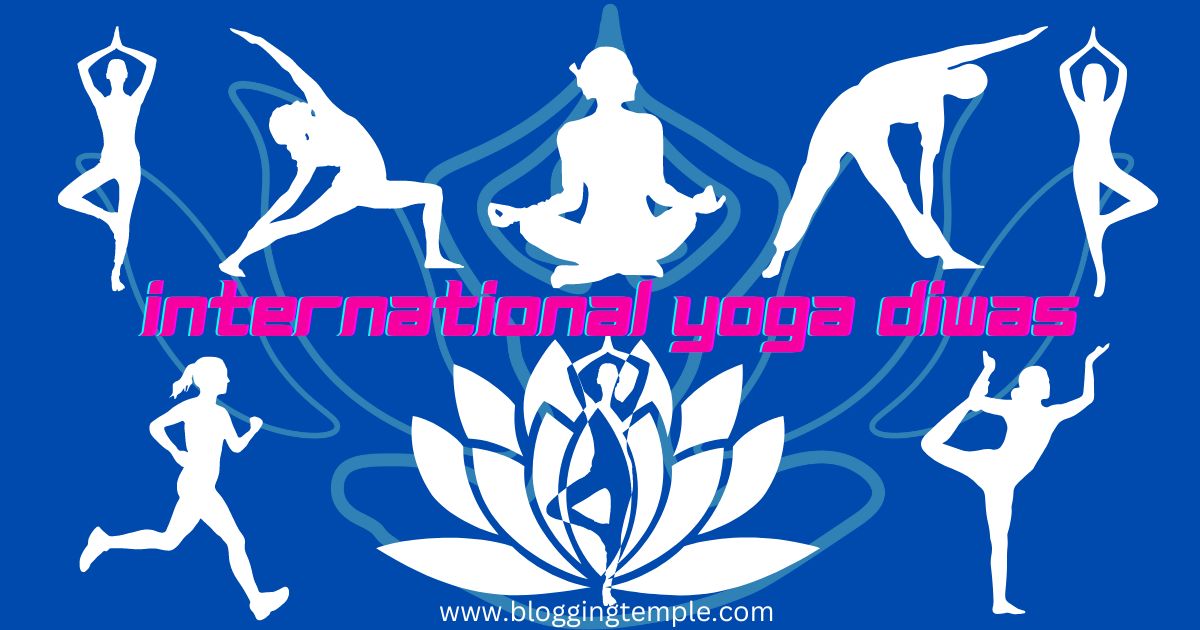Every year, on Yoga Diwas, commonly referred to as Yoga Day, people from all over the world come together to celebrate and support the age-old discipline of yoga. In this post, we’ll look at the origins of Yoga Diwas, its importance, and how it unifies individuals from different cultures while fostering health, happiness, and international harmony.
Discover the Yoga Diwas festivals and events taking place around the world. Learn about the customs, rituals, and ways that people commemorate this unique day of oneness via yoga. Discover a variety of inspiring yoga activities for people of all ages and fitness levels to get inspired. With these fun exercises, you can make your Yoga Diwas celebration even better.
Table of Contents
Learn How to Become a Youtuber: https://bloggingtemple.com/2023-youtuber
International Yoga Diwas
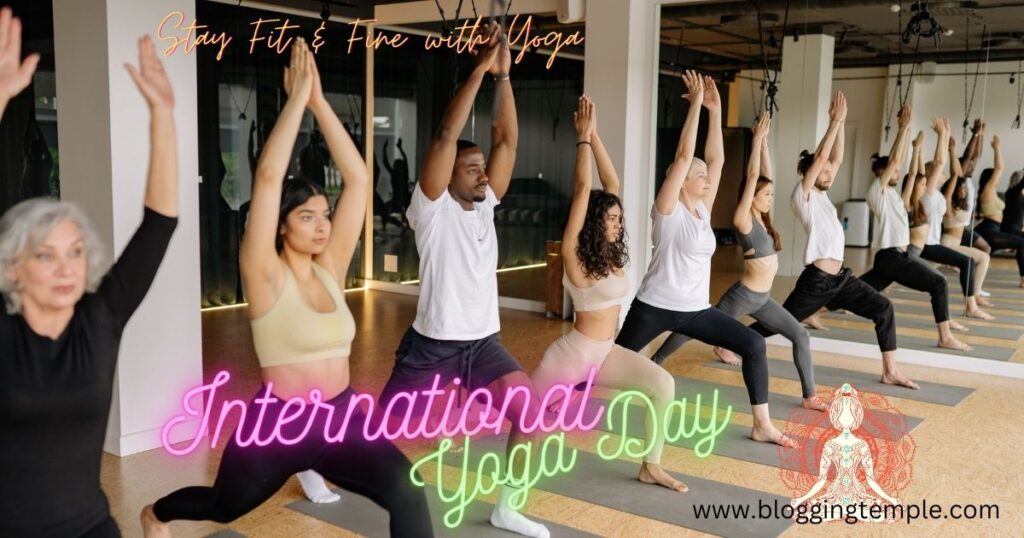
An International campaign known as Yoga Diwas, which is observed on June 21 every year, aims to increase public awareness of the many advantages of doing yoga. In his 2014 address to the UN General Assembly, Indian Prime Minister Narendra Modi made the initial proposal. The idea got resounding approval, which prompted the UN to proclaim April 20 as International Day of Yoga.
Historical Background of Yoga Diwas
Yoga has been practiced for a very long time and has its origins in ancient India. In Sanskrit, the word “yoga” denotes union or connection. In order to develop harmony and balance in one’s life, the practice entails physical postures, breathing exercises, meditation, and ethical concepts.
Significance of Yoga Diwas
Yoga Diwas is of utmost importance since it highlights the comprehensive advantages of yoga for both individuals and society at large. It serves as a reminder to accept yoga’s timeless teachings and its transforming ability to achieve physical, mental, and spiritual well-being.
International Day of Yoga
The International Day of Yoga provides a forum for people and groups to unite and celebrate the all-encompassing attraction of yoga. It promotes a better and more balanced way of life by encouraging individuals to adopt yoga into their daily lives.
Promoting Health and Well-being
Yoga is well known for its many health advantages. Regular exercise can lower the risk of developing chronic diseases while increasing flexibility, strength, and posture. Let’s delve deeper into yoga’s advantages for the body, mind, soul, and emotions.
Physical Benefits of Yoga
Yoga asanas (postures) aid in improving overall fitness by increasing flexibility, strengthening, and toning the body. They enhance internal organ performance, improve blood circulation, and strengthen the immune system.
Mental and Emotional Benefits of Yoga
Yoga benefits the mind as much as the physical. It fosters mental acuity, attention, and emotional wellness while assisting in the reduction of stress, anxiety, and depression. Improved concentration and a calmer state of mind might result from regular meditation and breathing exercises.
Spiritual Benefits of Yoga
Yoga has strong spiritual roots and offers a way to find inner peace and oneself. It makes it possible for people to communicate with their inner selves, developing a feeling of direction and promoting spiritual development.
Yoga as a Tool for Stress Reduction
In today’s hectic and fast-paced world, stress has emerged as a prevalent issue for many. Yoga provides practical methods for controlling and lowering stress levels. Yoga assists people in finding balance, regaining energy, and developing resilience via conscious movement, breathing techniques, and meditation.
Yoga for Inner Peace and Harmony
Yoga encourages self-reflection, compassion, and awareness, all of which contribute to inner serenity and harmony. It teaches people to let go of their problems and anxiety and live in the present, embracing a more tranquil and harmonious way of life.
Yoga for Sustainable Development
Yoga not only enhances one’s health but also significantly aids in the promotion of sustainable development. The practice fosters a strong connection with nature and fosters a sense of responsibility for the world, encouraging people to lead more ecologically conscious and thoughtful lives.
Yoga and Global Unity
Yoga Diwas serves as a bridge across cultural, regional, and religious divides. By bringing individuals together, it fosters mutual respect, understanding, and harmony between various populations. The common practice of yoga promotes a feeling of world harmony and serves as a reminder of our interconnectedness.
Celebrating Yoga Diwas Around the World
Various events and activities that highlight the essence of yoga and its advantages are held all around the world to mark Yoga Diwas. Let’s look at some of the typical ways that Yoga Diwas is observed.
Community Yoga Sessions
Communities host outdoor yoga sessions and welcome participants of all ages and socioeconomic levels. These classes foster a sense of community and inspire individuals to share in the joy of yoga practice.
Workshops and Seminars
Experts in the field lead yoga workshops and seminars, offering in-depth knowledge and direction on all facets of yoga. People can explore yoga’s various practices and gain a deeper grasp of it thanks to these events.
Online Yoga Classes
Online platforms are essential in the digital age for expanding yoga accessibility. Numerous online yoga courses are held on Yoga Diwas, enabling participants from all over the world to take part and experience the transforming power of yoga.
Some Popular Yoga Poses
Yoga poses are not specifically categorized as “international” or “non-international,” as yoga is a global practice that transcends borders and cultures. However, there are certain yoga poses that are widely practiced and recognized around the world. Here are a few examples:
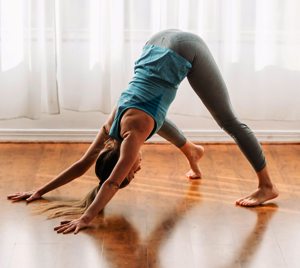
Adho Mukha Svanasana (Downward Facing Dog Pose):
Downward Facing Dog relieves tension and exhaustion while stretching the entire body, strengthening the arms and legs, and enhancing digestion.
Vrikshasana (Tree Pose):
Vrikshasana expands the hips and chest, strengthens the legs, and enhances balance and attention.
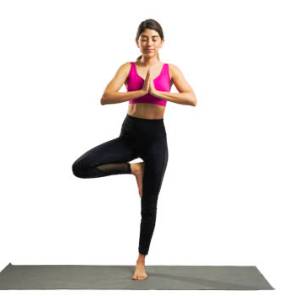
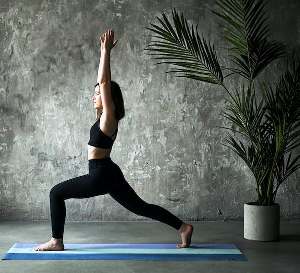
Virabhadrasana I (Warrior I ):
The practitioner of Veerbhadrasana stands with their legs apart. They place the knee of one leg squarely above the ankle while bending the other leg at a 90-degree angle. The palms of the arms are facing one another as they are extended upward.
Balasana (Child’s Pose):
Balasana, also known as “Child’s Pose,” is a calming pose that stretches the lower back, hips, and thighs, encourages deep relaxation, and calms the mind.
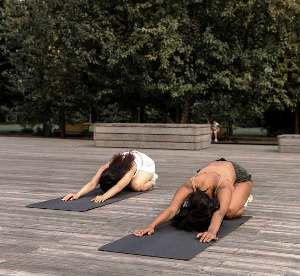
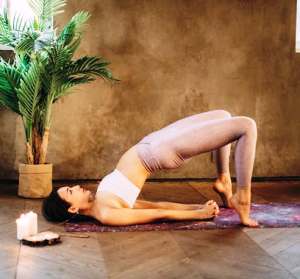
Setu Bandhasana (Bridge Post):
The practitioner is positioned in Setu Bandhasana with their feet flat on the floor and their knees bent, hip-width apart. The practitioner lifts the hips off the ground while keeping the arms by his or her sides, forming a bridge shape with the body.
Tadasana (Mountain Pose):
Tadasana, also known as the Mountain Pose, is a simple standing posture that enhances posture, strengthens the legs and core, and fosters general body awareness.
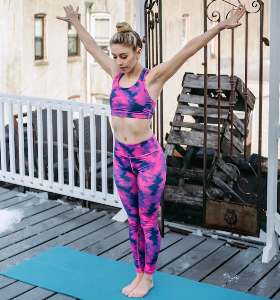

Savasana (Corpse Pose):
Savasana is a pose of total relaxation that promotes rest and renewal of the body and soul. It enhances mental clarity, decreases blood pressure, and lessens stress.
Bhujangasana (Cobra Pose):
Bhujangasana stimulates digestion, opens the chest, extends the spine, eases menstruation discomfort, and strengthens the back muscles.

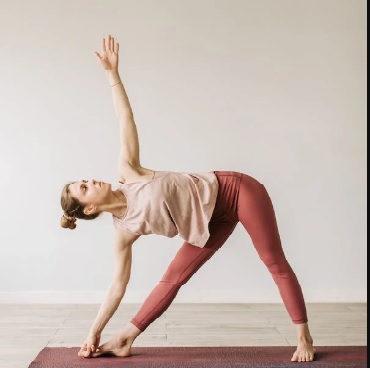
Trikonasana (Triangle Pose):
Trikonasana (Triangle Pose) strengthens the core, stretches the hips and hamstrings, increases leg flexibility, and enhances balance.
Padmasana (Lotus Pose):
The popular yoga pose known as Padmasana, sometimes called Lotus Pose, is frequently used in conjunction with pranayama (breathing techniques) and meditation.

These poses, among others, are commonly practiced in yoga classes worldwide and have become well-known and accessible to people from various backgrounds. It’s important to note that yoga is a vast discipline with numerous poses and variations, and the practice may vary depending on the style of yoga or the instructor’s preference.
Promoting Inclusivity and Accessibility
Yoga Diwas wants to make yoga available to everyone, regardless of age, gender, or level of physical fitness. Yoga is modified to suit various requirements and situations in an effort to guarantee that everyone can benefit from it.
Spreading Awareness about Yoga
The occasion of Yoga Diwas offers a chance to raise awareness of yoga’s practice and advantages. People and organizations aggressively promote the value of yoga in daily life through media campaigns, social media efforts, and community outreach programs.
Government Initiatives and Support
Governments all across the world encourage Yoga Diwas and acknowledge the value of yoga. In order to popularize the use of yoga and recognize its beneficial effects on society, they plan events, offer tools, and support legislative initiatives.
Conclusion
Globally, people get together to celebrate Yoga Diwas, which highlights the transformational nature of yoga. It fosters a closer bond with ourselves, others, and the world around us while promoting health, happiness, harmony, and inner serenity. People can go on a journey of self-discovery, personal development, and world peace by adopting yoga.
You Can also Visit to Know More: https://www.binaryeducation.in/
FAQs
1. How can yoga benefit my physical health?
Yoga strengthens the immune system, boosts posture, and helps with flexibility and strength. It also helps with general fitness.
2. Is yoga suitable for people of all ages?
Yes, yoga can be practiced by people of all ages and fitness levels. Modifications and variations are available to adapt to individual needs.
3. Can yoga help reduce stress and anxiety?
Absolutely! Meditation and breathing exercises are two yoga techniques that are useful for reducing stress and fostering calmness.
4. What if I’m not flexible enough to do yoga?
Flexibility is not a prerequisite for practicing yoga. Regular practice will gradually increase flexibility over time.
5. How can I incorporate yoga into my daily routine?
Begin by allocating a short amount of time each day to easy yoga poses, breathing techniques, or meditation. For the advantages to be felt, consistency is essential.

